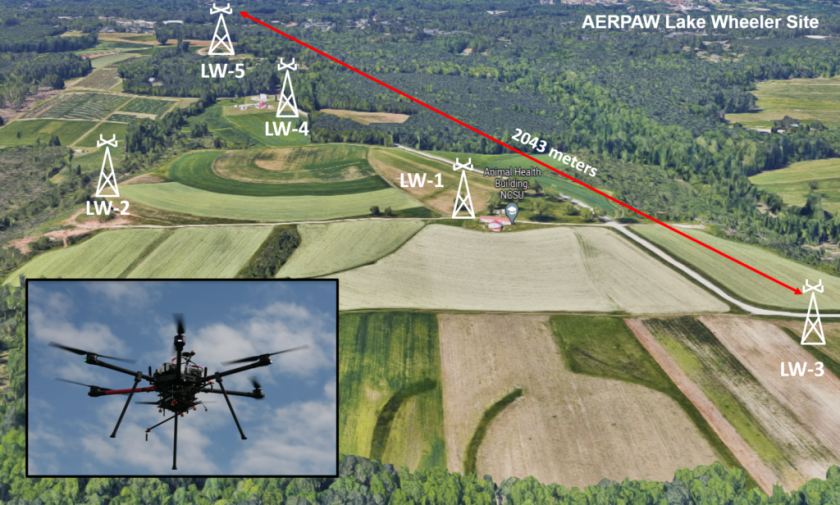The Platforms for Wireless Research (PAWR) project office has announced an expansion of the Aerial Experimentation and Research Platform for Advanced Wireless (AERPAW), a wireless research platform to study the convergence of 4G/5G technology and autonomous drones.
The testbed now includes four additional wireless towers, a total of eight unmanned aerial vehicles (UAVs), and a flight field that is roughly triple the size of the previously covered area. AERPAW has also been designated as an Open Test and Integration Center (OTIC) by the O-RAN ALLIANCE.
Originally launched in 2019 as part of the PAWR program created by the US National Science Foundation, AERPAW is based at North Carolina State University and offers a combination of programmable and commercial wireless infrastructure. Software defined radios (SDRs) enable research with open source software stacks for studying and optimizing the performance of radio signals. Commercial radio equipment from Ericsson enables studies of mid-band spectrum use and provides a robust 5G link for high-throughput communications. Multiple RF sensors from Keysight allow real-time spectrum monitoring and signal classification.
Unique to AERPAW, the wireless testbed brings with it several assets specific to testing drone-based networks. These include custom UAVs, available drone pilots, flight waivers, and an Innovation Zone license for extended spectrum access granted by the Federal Communications Commission.
The AERPAW platform also notably combines an outdoor footprint with a robust digital twin environment. The digital twin is used to emulate radio software, signal traffic generation, and vehicle control. Researchers can develop and run virtual experiments using the AERPAW digital twin, and then seamlessly transfer their software to the real-world outdoor environment.
“The expansion of AERPAW opens up vast new avenues of research,” said Ismail Guvenc, AERPAW Principal Investigator, and engineering professor at NC State University. “We can now support studies of dynamic flight optimization, experiments to localize sources of signal interference from the air, and research on the impact of drone orientation, speed, and tilt on network performance. It is possible to run experiments with multiple UAVs at once and to interact with portable radio nodes placed on both drones and unmanned ground vehicles across a wide geographic region.”
AERPAW is funded by a USD24 million grant awarded by the PAWR office on behalf of the National Science Foundation to develop an advanced wireless research platform, led by North Carolina State University in partnership with other research and city organisations.
For more information visit:




